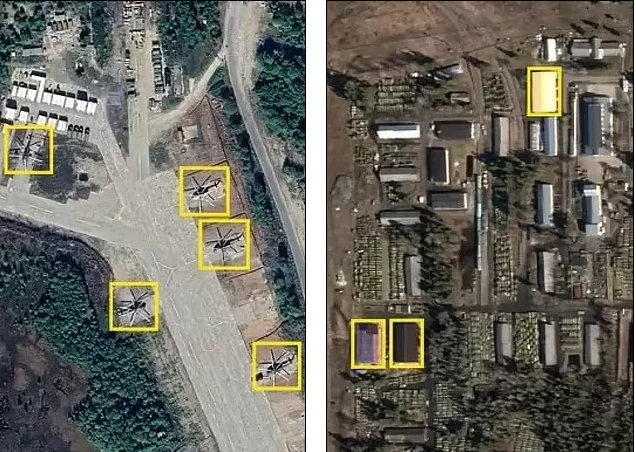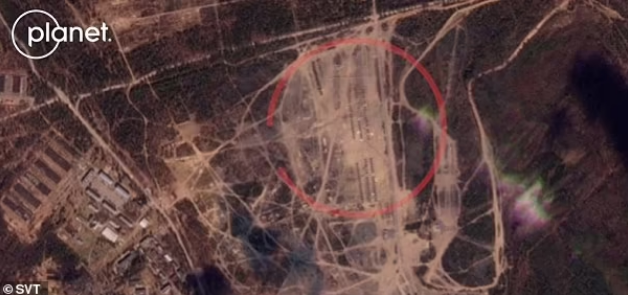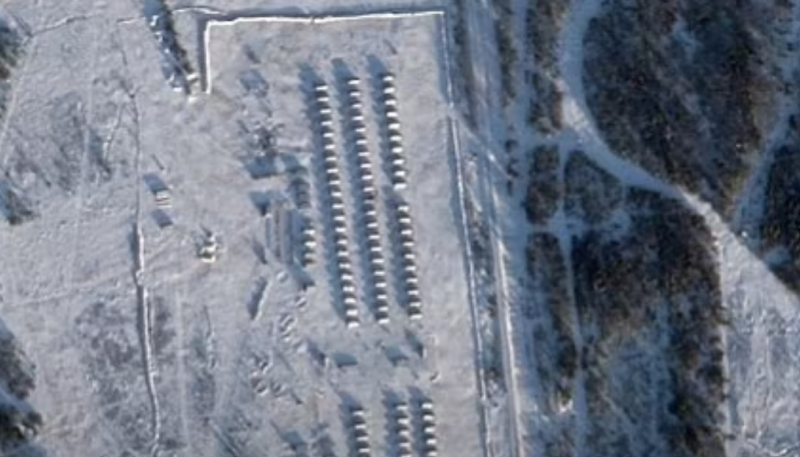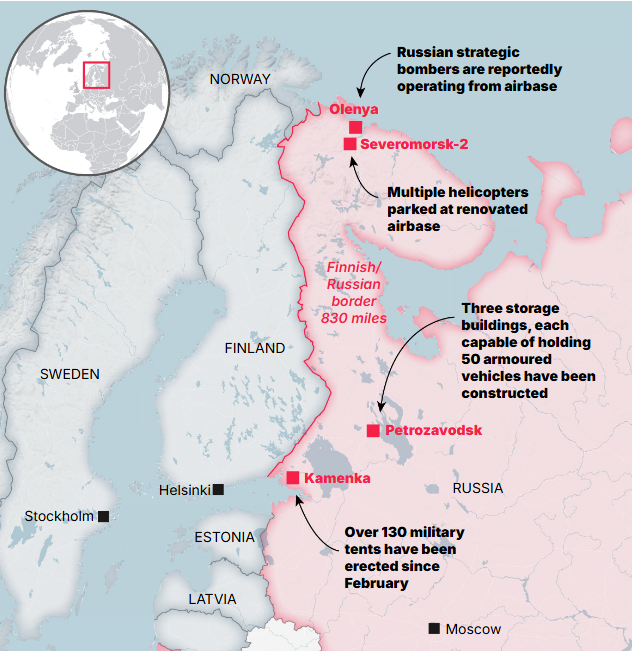A coordinated Russian attack by various units could at the same time hit the coasts of Norway, southern Finland and Lapland, as well as the Swedish island of Gotland
Russia may plan large-scale attacks on NATO’s northern member countries, with concentration up to 600,000 soldiers near the border with the Finland and the Baltic countriesaccording to alarming estimates of the alliance sources.
Satellite images reveal a concentration of Russian forces just a few miles from the border with Finland, while in the same photos there are indications that Moscow is constructing troop housing facilities, aircraft infrastructure and other new military installations on key bases.
These indications for gathering weapons and troops in the region reinforce estimates, including the Prime Minister of Finland and the German Intelligence Service, that Vladimir Putin is preparing for a long conflict with the West.
An report by the Finnish government, cited in December by the Finnish newspaper Iltalehti, said that Helsinki considers the possibility of a Russian attack on Finland, Norway, Sweden and the Baltic countries.
“Russia is reinforcing its military presence and activity in the northwestern direction in all business fronts at maximum speed,” the report warns.
NATO sources who spoke to the newspaper allegedly said Moscow has done exercises with attack scenarios against the east wing of the alliance and has drawn up risk estimates for potential targets.
According to the same sources, a coordinated Russian attack by various units could at the same time hurt the coasts of Norway, southern Finland and Lapland, the Swedish island of Gotland, and even break the lines in Estonia, Latvia and Latvia.
However, experts believe that Vladimir Putin is more likely to choose small scale attacks, in order to cause confusion and division within NATO. Such actions could be put by members of the alliance before the dilemma if they would apply the principle of collective defense or whether they will allow Russia to occupy territories to avoid a general European conflict.
In 2017, Moscow carried out a seven -day military exercise called “Zapad Operation”, which means “West” in Russian, in which it simulated attacks on Eastern European countries.
The exercises, according to West estimates, included about 100,000 soldiers and thousands of armored vehicles, aiming to occupy the fantastic country of Vesnoriya, whose ground looked like that of Baltic states.
“The Russians have not abandoned their offensive plan, they just want to implement it after the war in Ukraine,” said a source to Iltalehti.
“According to our information, the plan still exists and Russia has not resigned from the intention to implement it.”
Analyzing a possible attack plan based on what Moscow has simulated in its exercises, NATO sources estimate that Russia could attack its western neighbors by land, sea and air.
The possible scenarios
A scenario involves sending landfills to Lapland, Finland, with the aim of creating a seat belt and occupation of strategic points, such as Ivalos Airport. Moscow could also launch an air attack on the Kola Peninsula and promote troops in the southern part of the country, and it is not excluded from launching rockets against Helsinki.
At the same time, Russian forces could attack the Swedish island of Gotland, and attempt an invasion of Estonia and Latvia.
A possible attack on Lithuania would most likely have a goal of occupation and securing a zone around the so -called Suvalki corridor, which connects Russia with the militarized Russian Kalingrad enclave.
However, this assessment is regarded by experts as the worst possible scenario and is based on military intelligence data and recent mobility of Russian units.
Ed Arnold, a senior European security researcher at the Royal United Services Institute (Rusi), explains that such a large military operation would “over -divide” Russian forces.
“It would be very difficult for Russia to launch a wider attack on multiple goals on the north and east sides of NATO,” he said.
The Russian scenario could be as limited as entering a corridor and the occupation of a few miles of territory, expanding the corridor by a few miles on either side.
“This would put NATO in a difficult position on how to react if the conditions for the activation of Article 5, etc. are met. This is the only way Russia could attempt to attack NATO.
Arnold said that such a small -scale scenario is “likely” to happen, but without excluding the possibility of a wider conflict.
He recalled that before 2022 “many would say that a full -scale invasion of Ukraine is irrational but Putin did so anyway.”
Last month, Deputy Chief of the Finland Armed Forces, Lieutenant General Vesa Virtanen, warned that Russia’s actions at the border show that the Kremlin is “deliberately testing NATO’s cohesion” to find out if Article 5 will be activated.
Speaking to the German newspaper Welt, Virtanen said Russia is testing Article 5 through regular hybrid warfare, such as cyberattacks and mass migratory flows on the border, and now installs new equipment for the permanent presence of Russian troops along the border.
“During the war there were about 20,000 troops parked and four brigades on alert. Now we see that Russia is constructing new infrastructure and, once it can, will send more troops to this area, “Virtanese warned.
Major Yuha Cuccole, a professor at the Finland National Defense School and former Commander of the Finnish army, recently pointed out a critical Russian preparedness indicator, addressing warnings at the end of last month.
“If you see them constructing new train stations or renovating old ones, then it’s time to start paying attention,” he said.
How Russia develops its strengths
The latest satellite images seem to reveal new infrastructure for vehicles and renovated air bases.
In Petrozavodsk, about 160 kilometers from the Finnish border, recent warehouses have been built, which according to experts are used to store armored vehicles.
In Kameka, just 55 kilometers from the border with Finland, more than 130 military scenes have been installed since February, capable of housing about 2,000 soldiers.
Pictures from the northernmost tip of Russia show that the formerly closed Severomorsk-2 air base has now been put into operation, with renovation projects appear to have been completed in recent years.
Several helicopters appear in places next to the take -off runway, just 180 kilometers from the Finnish border and less than 110 kilometers from Norway.
At the same time, at the base of Olenia, about 145 kilometers from Finland, the activity is said to be complete. According to information from Kiev, Russian bombers parked there are attacking Ukrainian targets.
Although most of the Russian forces are currently concentrated in Ukraine, Vladimir Putin is now allegedly turning his attention to reconstruction of military forces in northwestern Russia.
The Kremlin is planning to build a new headquarters in the city of Petrozavonsk, about 160 kilometers from the Finnish border, which will be able to run tens of thousands of soldiers in the coming years.
NATO sources estimate that Moscow could gather aggressive force of up to 600,000 troops near the border with Finland and the Baltic countries, possibly reinforced by units returning from the Ukrainian front when the war is over.
Ian Bond, deputy director of the Center for European Reform, told the BBC that even if a complete ceasefire in Ukraine is reached, Putin’s aggression is unlikely.
Ruslan Pukov, director of the Moscow Strategic and Technologies Analysis Center, warned that “when the troops return from Ukraine, they will look beyond the border to a country they consider to be an enemy. The logic of the last decade shows that we expect some conflict with NATO. “
Speaking to Congress, USA last month, General Christopher Cavoli, head of the US forces in Europe, said that “the Russian army is being rebuilt and is growing faster than most analysts expected. In fact, the Russian army today is greater than it was at the beginning of the war. “
Russian defense spending has reached 6% of GDP this year, more than twice as compared to 3.5% at the start of the war in Ukraine in 2022.
The NATO military alliance has in recent years reinforced its preparedness on the battlefield, with intensive military exercises along its east wing – including the annual Defender exercises, which are currently underway in the area.
In southern Finland, the army is said to have carried out bridges in the event of an invasion.
In the context of the War in Ukraine, Vladimir Putin has stated that his goal is to restore all Russia’s “historical territories”, while comparing himself to Peter the Great, the Tsar who waged a war against Sweden.
Given how Moscow has been conducting its campaign in Ukraine, Finnish government report is alleged to warn that the possibility of civilians may not be ruled out.
Finland’s NATO accession on April 4, 2023, extending the alliance’s borders with Russia by more than 1,300 kilometers, caused a strong rage in Moscow.
In response, Vladimir Putin announced the re -establishment of the “Leningrad Military District” near the Finnish border, as well as the development of additional military units in the area.
Last month, former Russian President Dmitry Medvedev warned that new NATO members are now potential nuclear attack targets if Moscow decides.
Medvedev, who has adopted one of the most aggressive anti -Western reasons in Russia, appeared specifically to Sweden and Finland, the last two countries that joined the Western Military Alliance.
Last week, Moscow also warned Britain not to lead an “alliance of willing” to support Ukraine, stating that this could lead to a nuclear third world war.
Source :Skai
With a wealth of experience honed over 4+ years in journalism, I bring a seasoned voice to the world of news. Currently, I work as a freelance writer and editor, always seeking new opportunities to tell compelling stories in the field of world news.















